Every year, more than half a million people climb to the very edge of Mount Bromo's smoldering crater. They come not only for the breathtaking views, but to honor a centuries-old pact between the Tenggerese people and their gods—a promise sealed with tragedy during the days of the legendary Majapahit Kingdom.
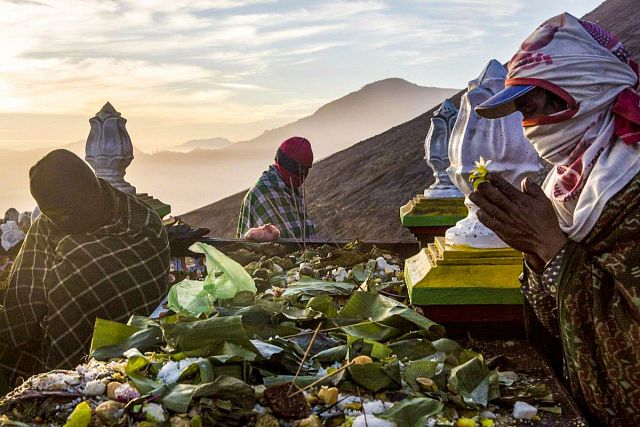
Mount Bromo is neither the largest nor the most dangerous volcano in Indonesia’s Ring of Fire. Within the vast Tengger Caldera itself, Mount Semeru looms taller and more perilous at 3,676 meters, and nearby Batok, although smaller at 2,440 meters, remains active. Bromo, standing at 2,329 meters with an 800-meter-wide crater, commands a different kind of power—spiritual, symbolic, and unrelenting. Covered in ash and smoke from frequent eruptions, the volcano’s last major outburst occurred in February 2016. Bromo demands respect; to underestimate it is to risk your life.
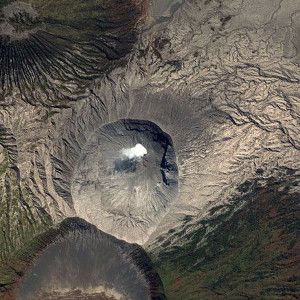
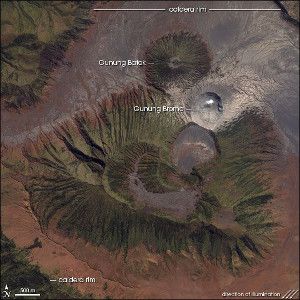
Mount Bromo is a living mountain, a fiery being that, according to legend, must be fed with offerings each year to keep it appeased. It is a Hungry Mountain, always breathing smoke and waiting for its ancient pact to be honored.
The People of the Volcano: The Tenggerese
At the base of this volatile mountain live the Tengger people, a vanishing ethnic minority of about half a million. Encircled by Muslim populations, isolated by their harsh environment, and weathered by centuries of colonial occupation, they have miraculously preserved their ancient Indo-Buddhist faith and traditions since the 15th century.
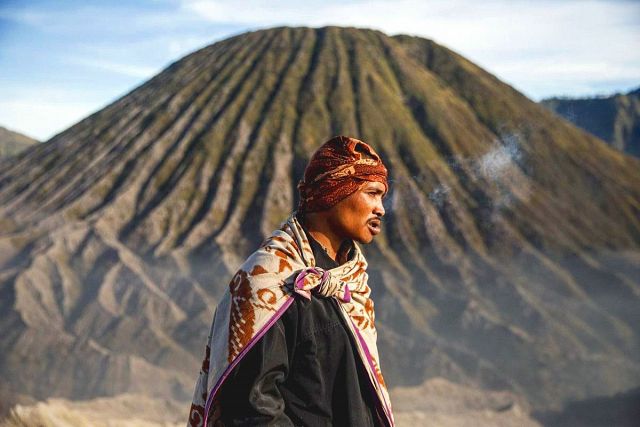
The Tenggerese claim direct descent from the noble rulers of Majapahit, the greatest empire Southeast Asia ever saw. Unlike the Balinese, who also trace their roots to Majapahit but have evolved their practices, the Tenggerese have preserved a form of Hinduism that is uniquely intertwined with animism and Buddhism. Their faith is closer to what flourished across Indonesia before Islam’s arrival.
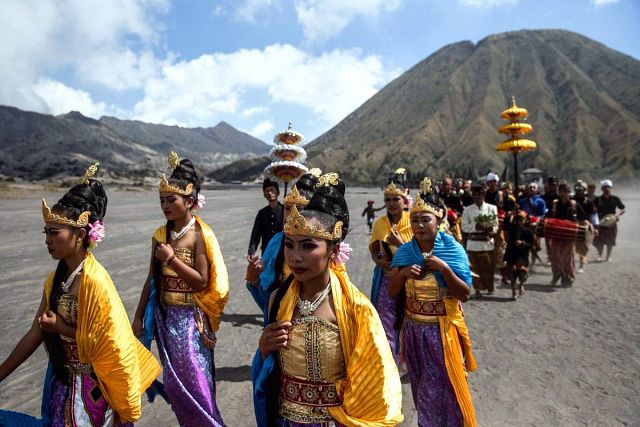
Remarkably, they have safeguarded their archaic dialect, their own version of the Kawi script, and spiritual practices found nowhere else in the world. They are to Hinduism what Old Believers are to Eastern Orthodoxy—an ancient tradition frozen in time.
Survival was never easy. Christian missionaries, Muslim settlers from Madura, and political pressures after Indonesia’s independence nearly erased their culture. During particularly violent periods, the Tenggerese even appealed to the Balinese for protection. Ultimately, it was the Indonesian government’s decision to declare the region a National Park that shielded them from further encroachment. Today, the Bromo Tengger Semeru National Park preserves not just a landscape but a way of life.
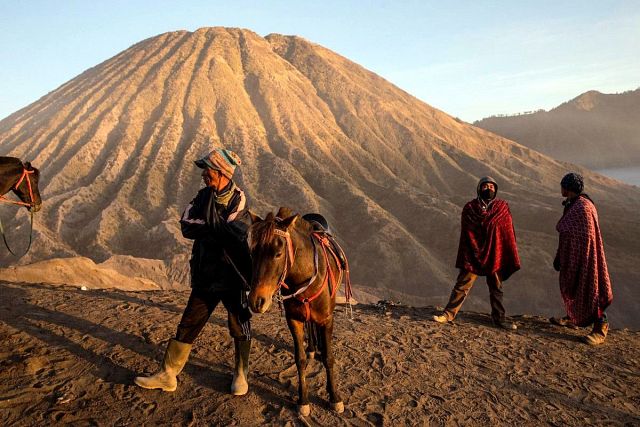
Kasada: The Festival of Remembrance and Faith
Once a year, in the twelfth month of the Hindu calendar (or the tenth in the Javanese calendar), the Yadnya Kasada Festival transforms the normally barren caldera into a vibrant sea of pilgrims, worshippers, and curious visitors.
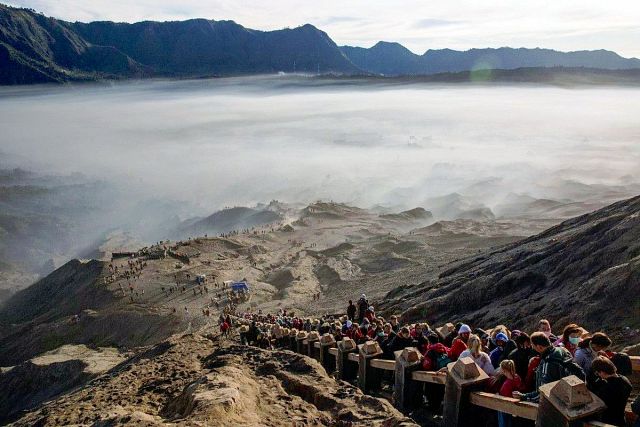
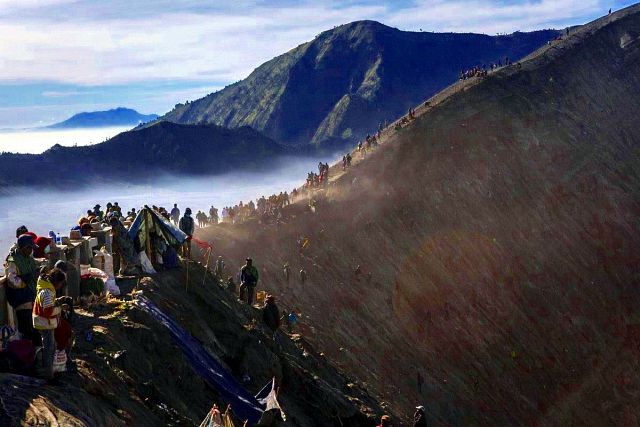
The central ritual occurs on the 14th day of Kasada, during the Upacara Kasada. Thousands gather at Pura Luhur Poten, a temple built on the vast ash plain known as the Sea of Sand. After prayers and blessings, the faithful ascend to Mount Bromo’s crater to make offerings—vegetables, fruits, rice, candies, flowers, coins, livestock—and symbolically cast them into the smoking abyss.
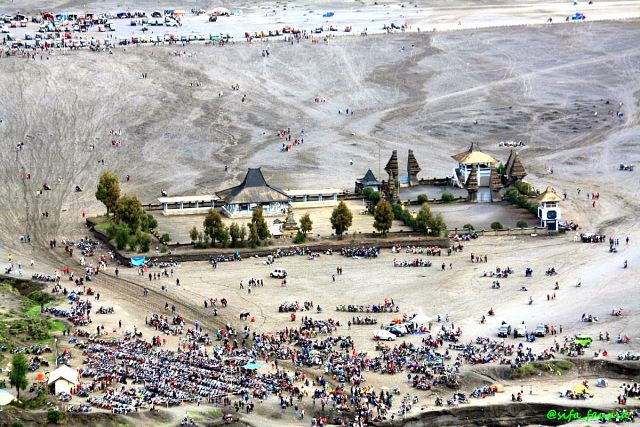
This ritual commemorates the ancient pact made by Queen Roro Anteng and King Joko Seger, who, according to legend, were granted children by the gods on one devastating condition: they would sacrifice their last-born to the volcano. When the time came, they hesitated. Their beloved 25th child, Prince Kesuma, was taken by the volcano, either through divine intervention or his own selfless leap. In grief and atonement, the royal family vowed that every year, offerings would be made to appease the mountain.
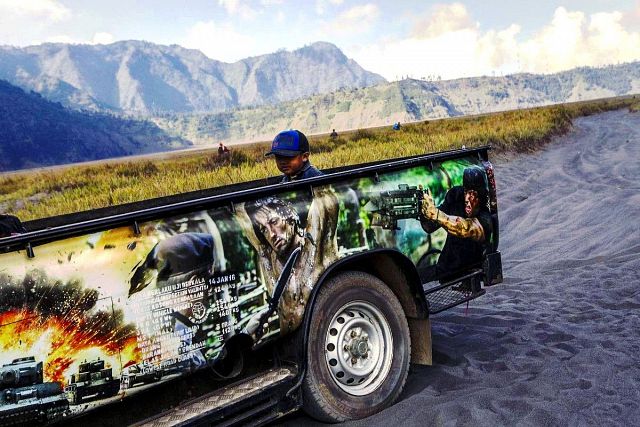
Today, human sacrifices are no longer practiced. Instead, symbolic offerings represent the community’s continued gratitude and reverence. Even the simplest basket woven from banana leaves, containing rice, sweets, and incense, carries deep spiritual weight.
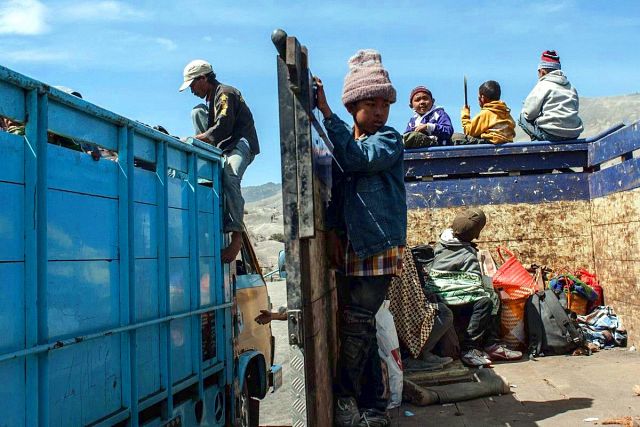
Crossing the Sea of Sand
The journey to the crater is arduous. Pilgrims cross the Sea of Sand on foot, horseback, or by jeep fitted with special tires for the treacherous terrain. The sandy plain is nearly lifeless, with much of it consisting of black volcanic ash. Reaching the temple and then climbing to the crater can take several hours under the relentless sun, where despite the bright skies, temperatures often hover around +5°C and winds can reach 55 kilometers per hour. Sunburn and dehydration are real threats, making preparation essential.
Rain clouds rarely rise above 2,000 meters, so while the sky is often clear, the volcano itself may blanket the caldera in toxic sulfuric smoke, turning the landscape into a ghostly battlefield between earth and sky.
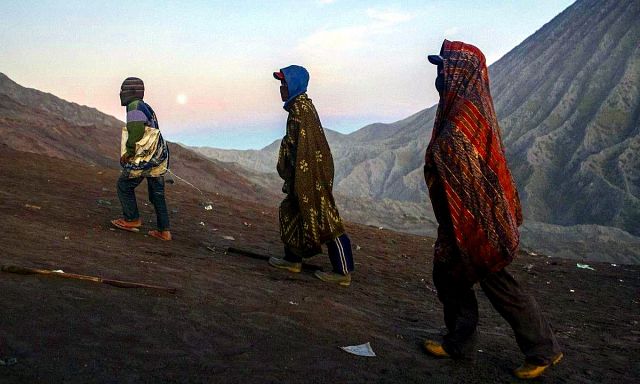
A Night of Fire and Faith
The festivities begin at sunset. As darkness falls, the sounds of gamelan orchestras and Javanese drums fill the air, accompanying a dramatic performance retelling the legend of the Kasada sacrifice. Dancers in intricate costumes reenact the tale of Queen Roro Anteng and Prince Kesuma.
By midnight, the mood shifts. The theatricality gives way to solemn prayers and trance ceremonies. Worshippers, dressed in their finest ceremonial clothing, arrange elaborate offerings in compositions of flowers, fruits, rice, candies—and, for those seeking special blessings, goats or cows.
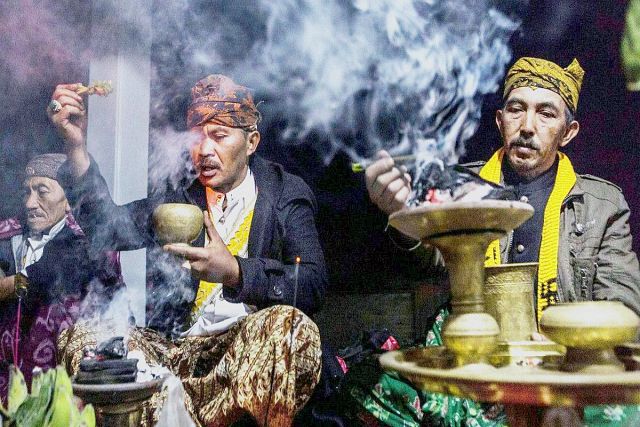
The largest ceremony of the year unfolds under the stars.
Leading it are 27 chief priests—one from each Tengger village—each supported by three assistants. These dukuns are not just religious figures but community leaders and spiritual guides. The night is also their moment of trial: they must recite complex ancient mantras, perform healing rituals, and demonstrate their spiritual worthiness in front of their people.
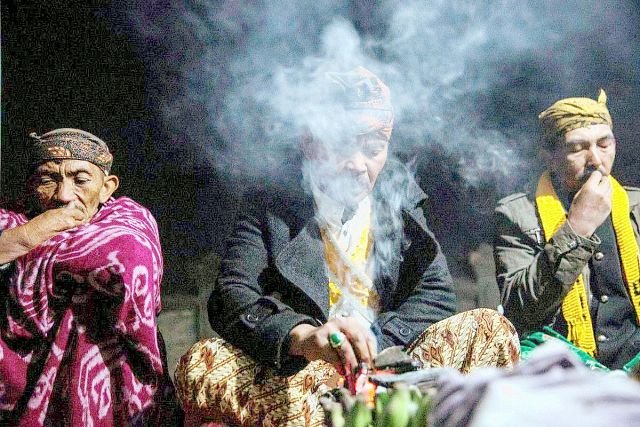
It’s a high-stakes tradition: the gods must be convinced that the dukuns are still worthy of guiding the community.
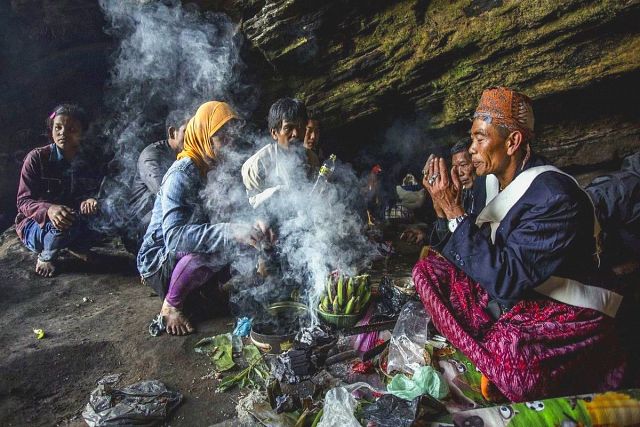
The Crater and the Spirit of Offerings
At dawn, the faithful move toward the volcano. Offerings are thrown into the yawning crater—coins, flowers, roosters, goats—anything meant to appease the gods and seek favor.
Every basket of rice, every goat or rooster tossed into the smoking crater is not just a gift—it's nourishment for the Hungry Mountain, a fulfillment of the ancient covenant between the Tenggerese and their gods.
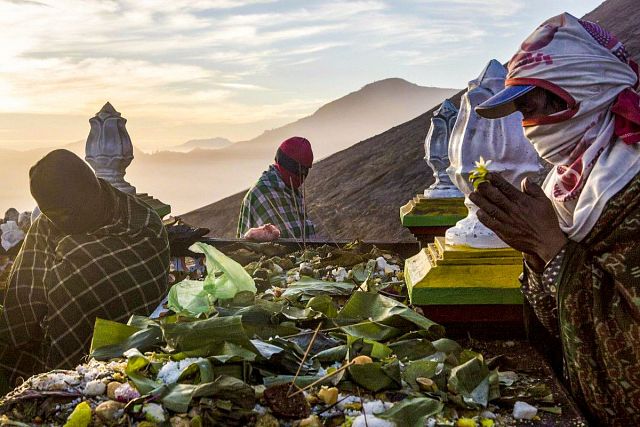
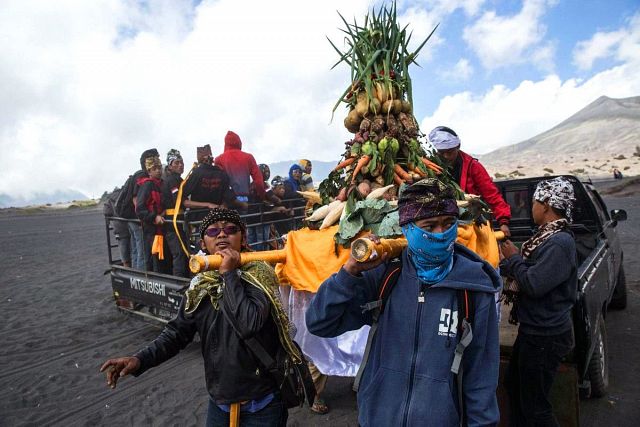
Surprisingly, many of the physical offerings don’t remain in the crater. Local residents, mostly Muslims, wait on the crater’s inner slopes to catch the gifts. Using sarongs to snatch offerings mid-air or scaling the treacherous rocks, they risk their lives for what the faithful toss in.
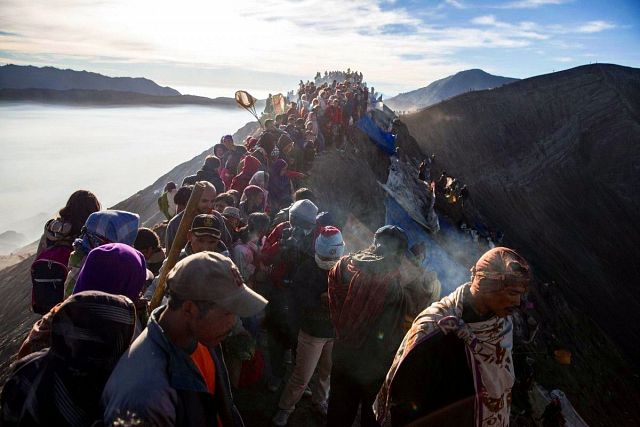
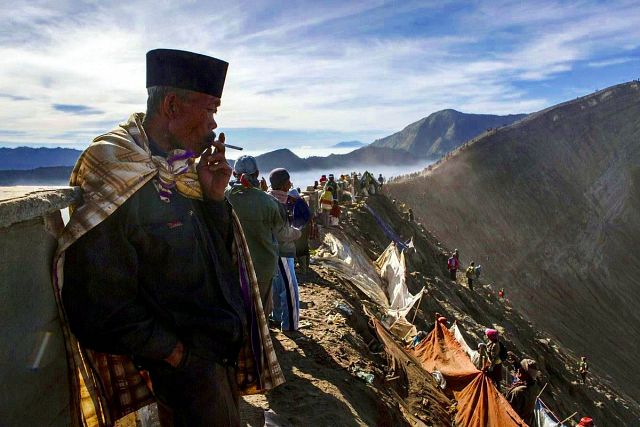
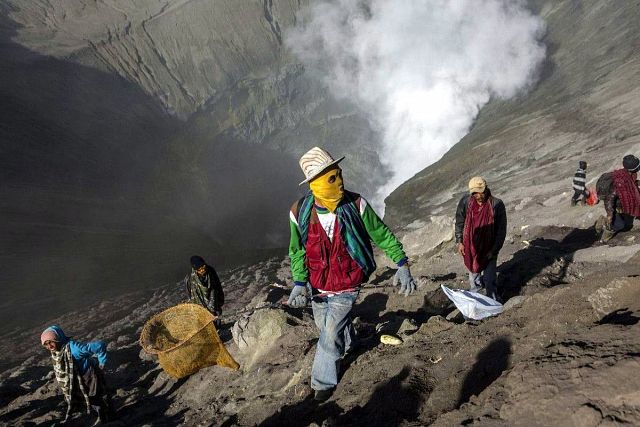
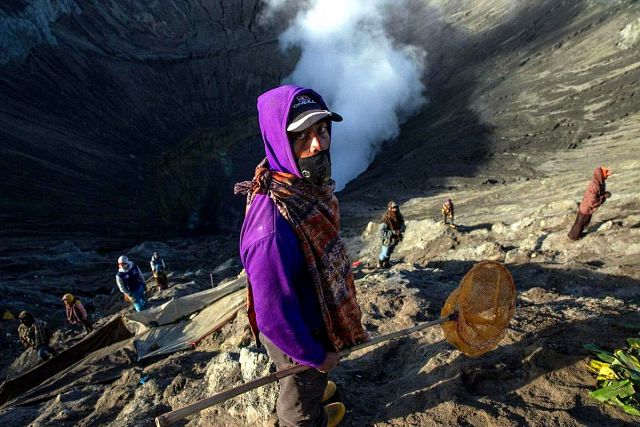
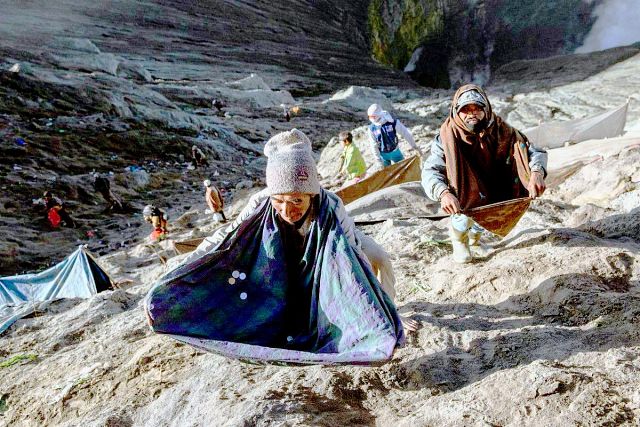
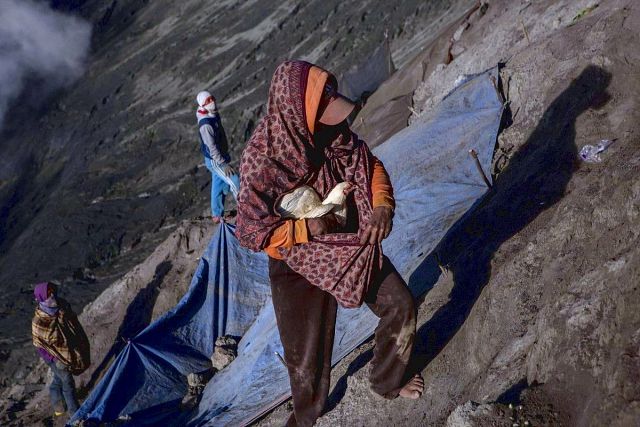
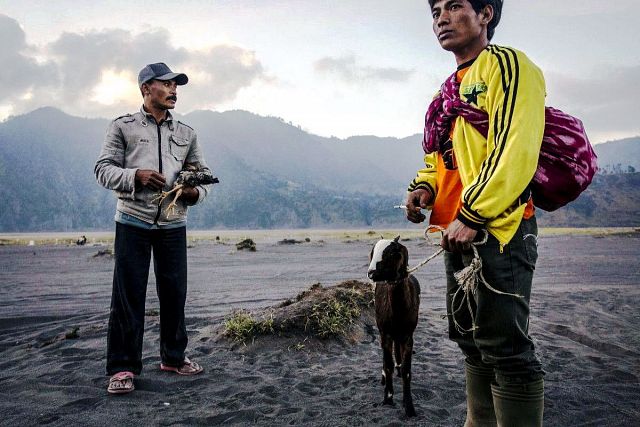
But the Tenggerese do not mind. In their belief, the moment an offering leaves their hands, its spiritual essence already belongs to the gods. What happens to the physical object afterward is irrelevant. The gods take the spirit of the offering; the material item is secondary.
This blending of faiths, traditions, and survival instincts offers a powerful glimpse into the cultural complexity of modern Indonesia.
Still, the work is perilous. Every year, a few people fall to their deaths while trying to catch larger offerings like drugged goats or heavy sacks. The volcanic smoke is toxic, and the crater's edge is fragile and crumbling.
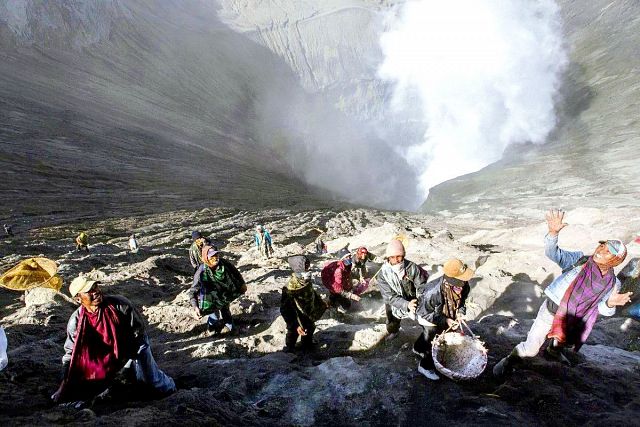
Reflection in the Shadow of Fire
While non-Tenggerese visitors eventually leave, marveling at the spectacle they have witnessed, the Tenggerese remain by the crater until sunset. This day is not just a festival—it is a time of prayer, reflection, and personal reckoning.
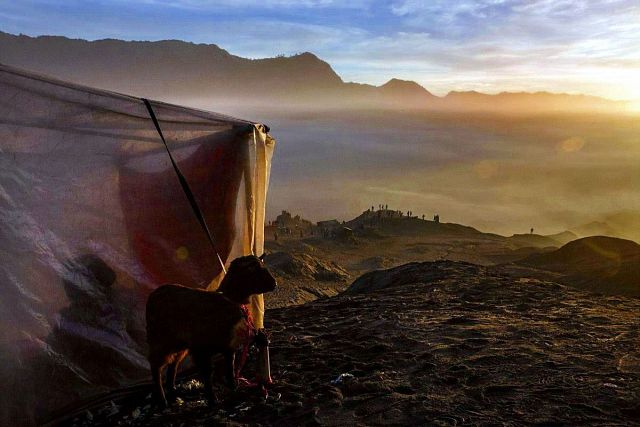
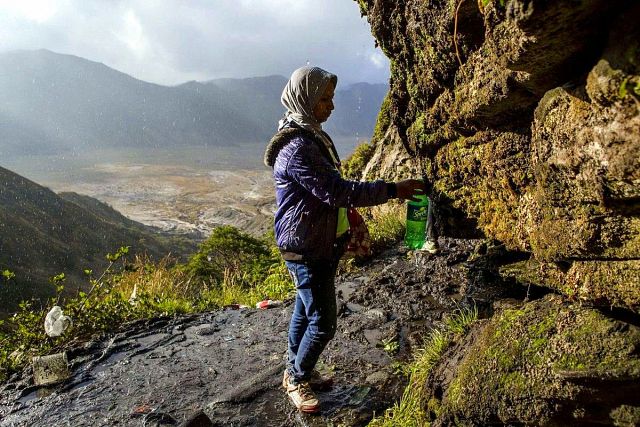
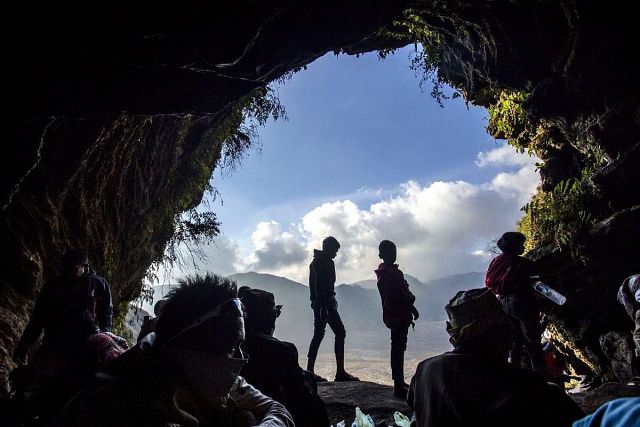
In the harsh world sculpted by fire and ash, life demands resilience, faith, and constant negotiation with forces far greater than oneself. For the Tenggerese, Mount Bromo is not merely a volcano. It is a living, breathing god—a Hungry Mountain that remembers ancient promises and reminds all who come near that survival and sacrifice are forever intertwined.
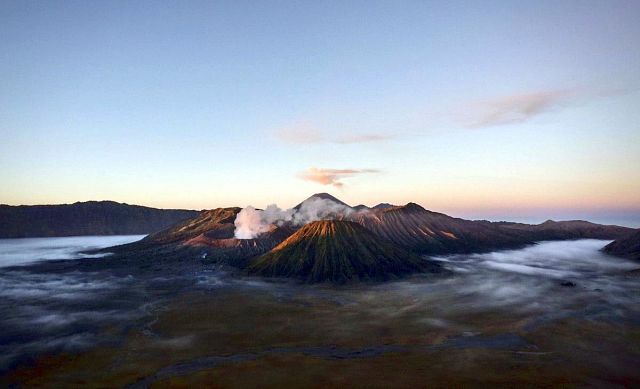
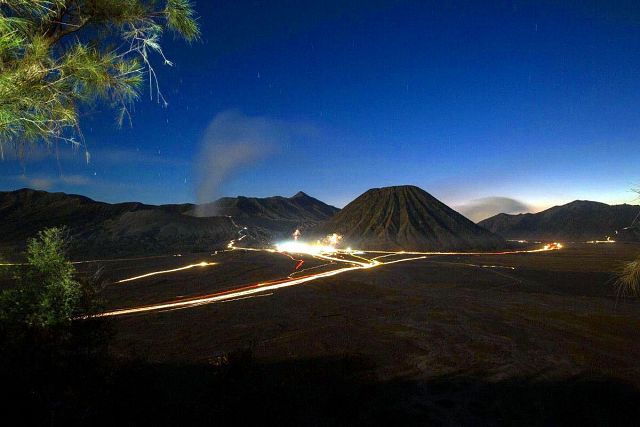
Roads&Kingdoms
Text : Nikki
Photographs: Agung Parameswara
You can add one right now!